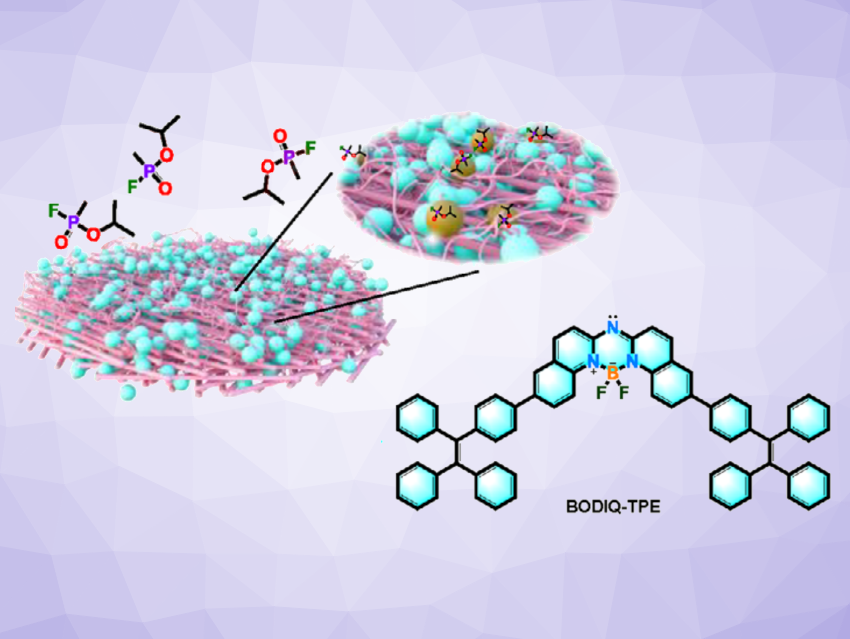Xiaolin Zhu, Haonan Peng, Shaanxi Normal University, Xi’an, China, Gang He, Xi’an Jiaotong University, Xi’an, China, Molin Qin, State Key Laboratory of NBC Protection for Civilian, Beijing, China, and colleagues have developed a fluorescence sensor based on a boron-difluoride complex film that can dynamically respond to gaseous sarin and discriminate it from interfering analytes. The developed sensor offers a highly sensitive and selective method for detecting this dangerous nerve agent.
The team used a boron-difluoride complex (BODIQ-TPE, pictured) with an aza-boron-diquinomethene (aza-BODIQ) core, flanked by two tetraphenylethylene (TPE) units. They used simple filter paper as a substrate for this fluorescent component. The nitrogen atom of BODIQ can interact with the nucleophilic phosphorus atom in sarin, followed by a hydrolysis reaction that results in the formation of the protonated form BODIQ-TPE-H+. This reaction is accompanied by a color change from a cyan/blue color to yellow/brown and a change in the emission spectrum.
The sensor has a low detection limit of 0.7 ppb, ensuring even trace amounts of sarin can be identified accurately. The response time is fast (less than 2 s). One of the key advantages of this sensor is its ability to distinguish sarin from other similar compounds. This selectivity is crucial for applications in environments where multiple chemicals may be present. The detection system the team built is low-cost and also provides portability: The fluorescence sensor and the sample chamber were combined with a circuit board that steers an air pump, as well as an excitation light source, optical filters, and a light detector within a small device. Overall, the sensor could be useful, e.g., in environmental monitoring, security, and defense.
- Dynamic response and discrimination of gaseous sarin using a boron‐difluoride complex film‐based fluorescence sensor,
Zhijie Zhou, Lei Zhang, Lingya Peng, Yingjie Li, Xiaolin Zhu, Yidi Wu, Zebiao Qiu, Gang He, Molin Qin, Haonan Peng, Yu Fang,
Aggregate 2024.
https://doi.org/10.1002/agt2.629




